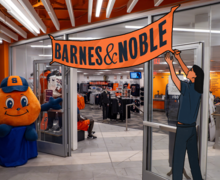Decorative football stolen from Ernie Davis’ grave site
The football sitting in a plastic display case atop the headstone of former Syracuse University running back Ernie Davis was stolen from its resting place in Elmira, N.Y., sometime last week.
Tom Henegar, superintendent of the 80-acre Woodlawn Cemetery in Elmira, said he was notified of the missing football Thursday, according to an article published online Friday by the Star Gazette. The ball has been taken several times from the grave site since an anonymous person first placed it there last summer, according to the article.
Occasionally, the ball will get blown off the headstone from the wind and end up somewhere else in the cemetery, Henegar told the Star Gazette. But it is always put back in its rightful spot. Henegar said he suspects that this time juveniles were the culprits, as the ball was physically taken out of its display, according to the article.
Henegar also said he doubts the thief was a collector because if it had been, he or she likely would have taken the case as well, according to the article.
Henegar could not be reached for comment.
Davis moved to Elmira with his mother and stepfather when he was 12 years old. He became a high school All-American in both football and basketball while attending Elmira Free Academy. He later became an All-American football player at Syracuse University. At SU, Davis became the first African-American to win the Heisman Trophy in 1961.
Davis was a No. 1 NFL Draft pick for the Washington Redskins and was traded to the Cleveland Browns, but he never played in an NFL game. He was diagnosed with leukemia and died at 23 years old in 1963.
After his death, Elmira Free Academy was renamed Ernie Davis Middle School.
The football stolen from Davis’ grave was not autographed, and its significance remains unknown, according to the article.The display case where the football sat was unsealed and also contained a Cleveland Browns lanyard, according to the article. The case could not be permanently attached to the headstone and sat open to anyone entering the cemetery.
Published on March 18, 2012 at 12:00 pm
Contact Liz: egsawyer@syr.edu | @3sawyer





